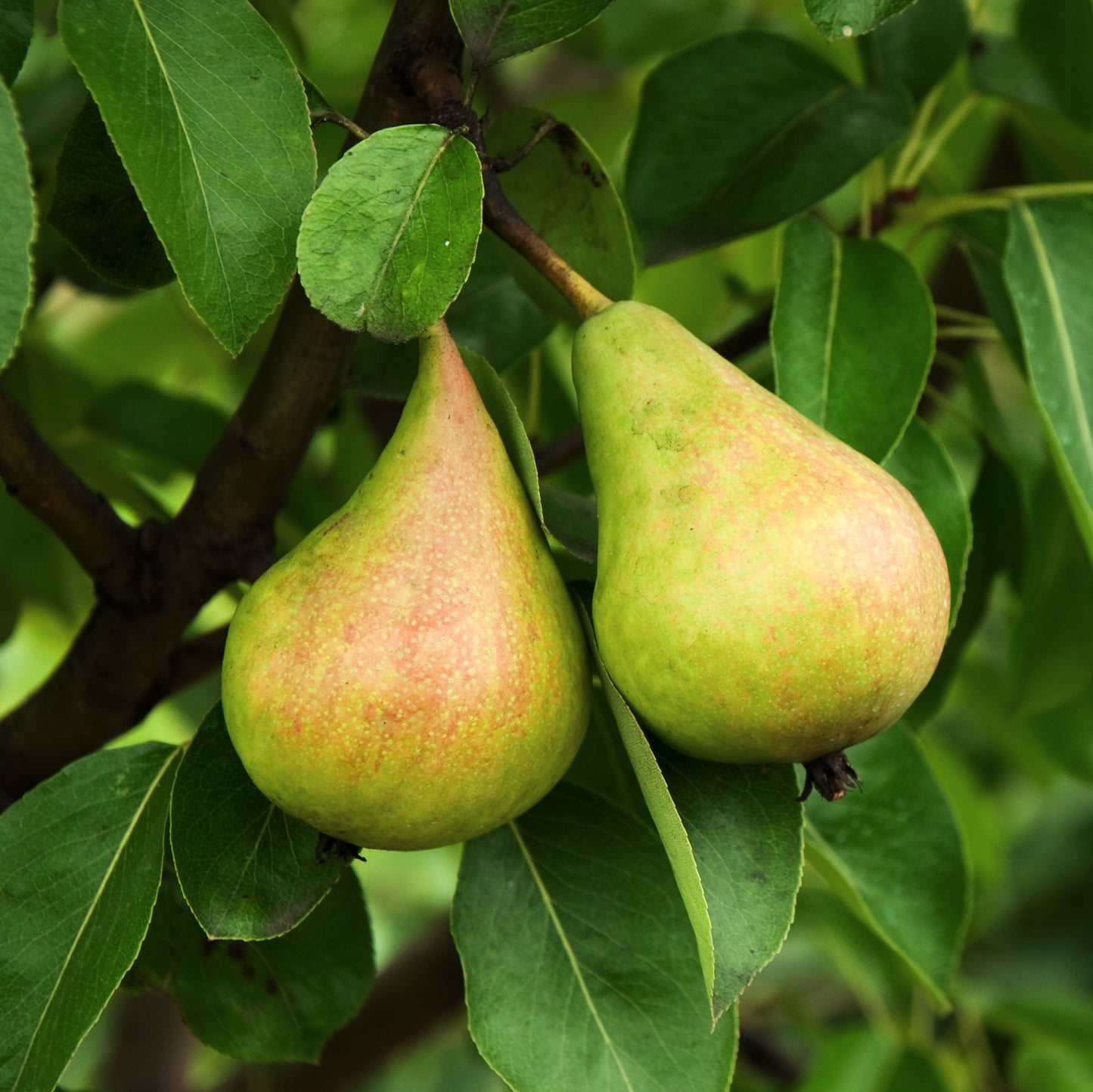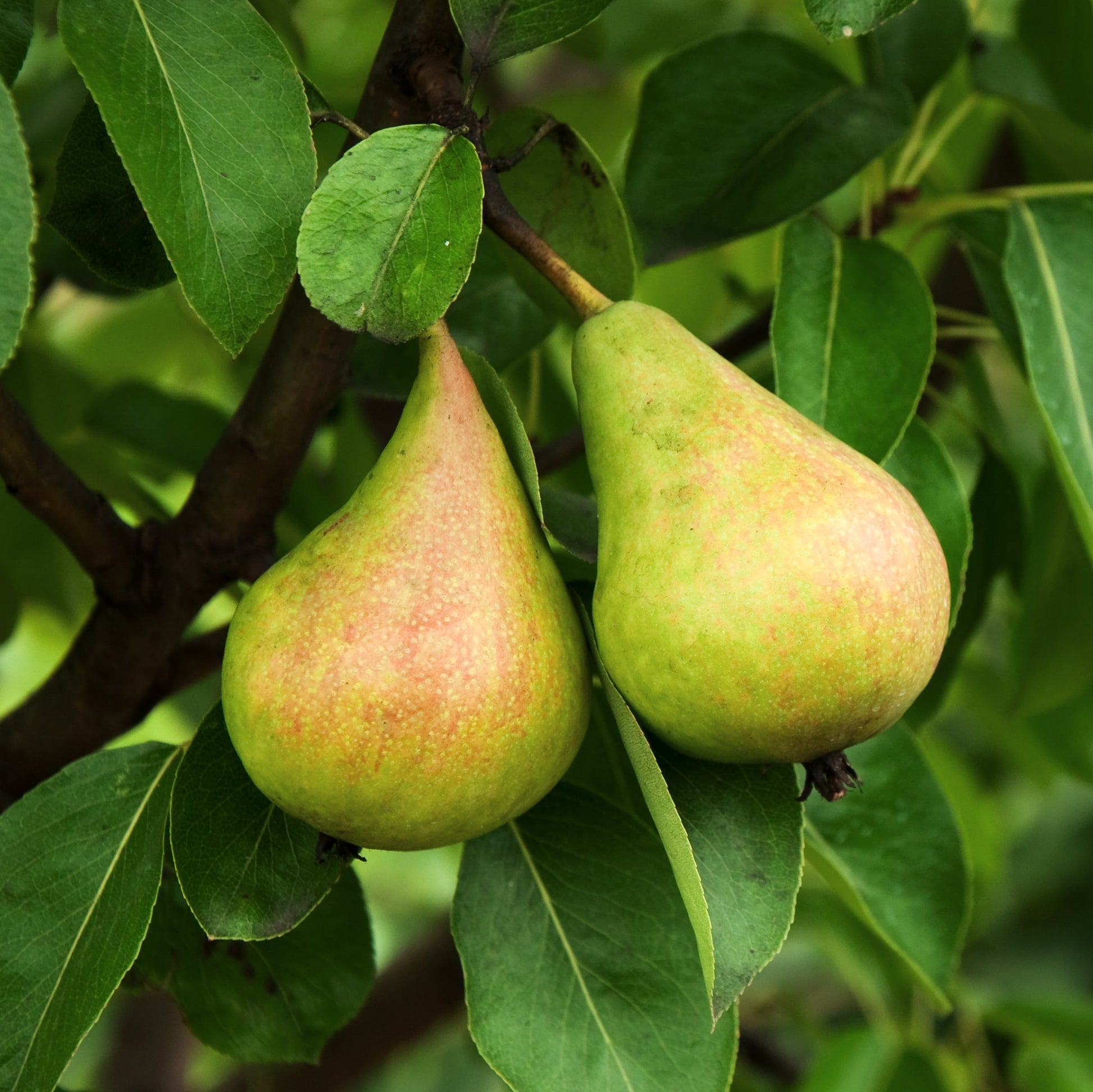Spring Planting Season is Here!! Grow Stronger, Healthier Trees for Less!!
Bare root trees grow faster, cost 50% less, AND establish much better than potted trees. PLUS they leave a much smaller environmental footprint. Order NOW before the season ends!
Ayers Pear Tree
Ayers Pear Tree
Couldn't load pickup availability
Pyrus communis ‘Ayers’
Ayers Pear Tree – Product Description
The Ayers Pear Tree is a southern favorite known for its highly sweet, buttery-flavored fruit and natural resistance to fire blight. This early-season European pear produces yellow fruit with a red blush that ripens in late summer and is excellent for fresh eating right off the tree.
Well-suited for warm climates, home orchards, and edible landscapes, Ayers is a vigorous grower that delivers reliable harvests, fragrant blooms, and low-maintenance performance in sunny locations.
Ayers Pear Tree Overview
| Attribute | Details |
|---|---|
| 🌿 Botanical Name | Pyrus communis ‘Ayers’ |
| 🏷️ Common Names | Ayers Pear, Sugar Pear |
| 🌳 Mature Height | 12–20 feet |
| 🌐 Mature Width | 12–15 feet |
| 📈 Growth Rate | Moderate (1–2 feet per year) |
| ⏳ Lifespan | 40–60 years |
| 🧊 USDA Zones | 6–9 |
| ☀️ Sun Preference | Full sun (required for maximum sweetness and yield) |
| 🧱 Soil Type | Well-drained loam or sandy soils |
| ⚖️ Soil pH | Slightly acidic to neutral (6.0–7.0) |
| 💧 Water Needs | Moderate; prefers consistent moisture |
| 🍐 Fruit Type | Small to medium, yellow pears with red blush and smooth texture |
| 🌸 Flower Color | White; blooms in early spring |
| 🐝 Pollination | Self-pollinating; benefits from another variety nearby |
| 🌿 Growth Habit | Upright, rounded canopy with strong limbs |
| ↔️ Spacing | 15–20 ft apart for orchard-style planting |
| 🏡 Landscape Uses | Edible gardens, homesteads, backyard orchards, pollinator borders |
| 🧹 Maintenance Level | Low to moderate |
Environmental Benefits
🌸 Produces early spring blossoms that support pollinators
🍐 Encourages local food production and self-sufficiency
🌿 Adds shade, structure, and beauty to edible landscapes
🪶 Offers fall fruit and cover for wildlife and songbirds
Pros & Cons
| ✅ Pros | ⚠️ Cons |
|---|---|
| 🍐 Exceptionally sweet flavor perfect for fresh eating | 🐝 Self-fertile but yields improve with a second pear tree |
| 🌸 Fire blight-resistant and ideal for southern climates | 💧 Requires regular watering during dry spells |
| 🌿 Compact, manageable size for backyard growers | ✂️ Pruning needed to maintain air circulation and structure |
| 🧬 Vigorous grower with reliable annual harvests | ❄️ Not ideal for northern climates with severe winters |
| 🐝 Attracts bees and pollinators with showy white flowers | 🌱 May require thinning in heavy crop years to prevent limb stress |
Planting & Care Guide
🛁 Water thoroughly before and after planting; maintain consistent moisture
🕳️ Dig a hole twice the width of the root system; keep graft union 2 inches above soil
🌾 Apply 2–3 inches of mulch around the base to conserve moisture and block weeds
💦 Water weekly during the first year and during fruit development
✂️ Prune in late winter to shape and encourage healthy fruiting branches
🧪 Fertilize annually in early spring with a balanced fruit tree fertilizer
The Ayers Pear Tree is a low-maintenance, high-sweetness producer that’s perfect for Southern growers and home orchard enthusiasts. With fire blight resistance, spring blossoms, and candy-sweet fruit, this compact tree delivers beauty, bounty, and old-fashioned flavor in every bite.
Share


